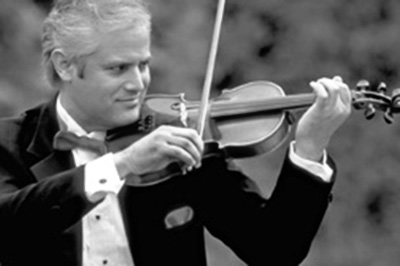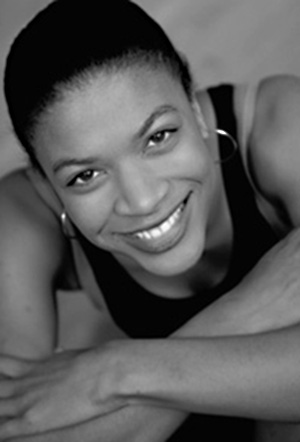
So why should any photographer be interested in the technique of producing ‘Character Study’ images? Well if you’re a photojournalist these ‘every day life’ images can add impact and interest to your photo stories. If you’re a portrait photographer this style of image making can add depth and diversity to your studio sittings. If you’re looking to build a business in photographing model and talent portfolios, this technique is essential. Or if you’re like me, you just love finding and photographing people with great faces and character.
In many magazines and newspapers around the world there are images entitled ‘Character Study’, which are nothing more than a person ‘made up’ to look like something they are not. This is not my interpretation of a character study, because there are plenty of ‘real characters’ walking the streets or sitting in your own home. These subjects would make excellent studies without benefit of costumes, make-up, or even dramatic lighting and fancy filtration.
With the growth of photographic journalism and the interest of that journalism in people, real people as themselves, have brought us a different type of character study. The picture magazines use this type of character study constantly. The photographer has invaded the homes, offices, and churches of these “characters” and has made natural settings and natural clothing as important as natural expression and action.
The difference between a character study and a portrait is, very often, the difference between the personality of the subject and the impression or image he or she would like to create. A portrait is usually a premeditated plan to present the subject in the most favorable or flattering pose. Character studies are another thing entirely. They portray real people doing real things in the real world.

Few people can be natural in front of the camera. Sitting for a portrait is to the average person like sitting alone in an empty room while fully aware that a hidden observer is watching every move. It’s an uncomfortable feeling. And the most difficult job the photographer has is to dispel that feeling. The mechanics of exposure and lighting involved are of comparatively little importance to your subject. It is you the photographer who should have these elements preplanned and under control.
A good character study is usually the result of good direction. This is true of all types of character studies, whether they are of individuals, groups, towns, cities, or animals. In the case of animals, and some individuals, good direction has to be replaced by sheer patience.
Individuals are the most difficult subjects, for they must remain individuals. They cannot blend into a background or become a part of anything. They are the center of attraction and they know it. Consequently, they are under tension. It is up to the photographer to dispel that tension the best they can. Some subjects can be humored out of it, others talked out of it.
But most subjects will forget about their unfamiliar predicament if properly distracted. Case in point: I once had an assignment to photograph the CEO (Chief Executive Officer) of a major wood products company for their annual report. Upon arriving at his office I was told by the public relations person that he would only give me ten minutes of his time for the session. Setting up my equipment in his vacant office I soon found myself waiting for his entry. While waiting I noted with interest the pictures and memorabilia around his office, much of which, related in some way or the other to golf.
When he finally arrived I found him to be cold, distracted and not wanting to take any direction from me. Here I was a young photographer trying to make an image of a man who could care less and who could buy and sell me a thousand times over. He, his office and the assignment intimidated me. But then that’s when I took control. I begin talking about golf, golfing and golfers (a subject I knew little about). I opened the subject but let him do the talking. Soon his eyes came to life, the frown turned to a smile and his face became animated.
An hour later I walked out of his office with over one hundred images, a new friend and most importantly renewed confidence in myself.
When making character studies, or perhaps I should say, “when recording character”, it is the subject who sets the pace. Character studies then are momentary reflections of a subject’s personality, captured forever. The photographer may choose the location and help to prepare a relaxed or provocative atmosphere, but it is the subject who presents the picture possibilities. The photographer must create his shots on the wing. If the photographer is a competent and inspired image-maker with fast reflexes and good taste, they will wind up with some studies, which will reveal the character and characteristics of their subject.

Real people doing real things.
Lighting
Because I like to have my pictures as sharp as possible, I prefer flash for my illumination when working indoors. This affords me a powerful light source, the smallest aperture for maximum depth and clarity, and an exposure so fast that the subject is not required to hold a pose. My lights are so arranged to provide an even basic lighting pattern for overall illumination regardless of the subject’s movements. However, I try to avoid flat lighting by placing a ‘kicker’ light high and in back of the subject.
My basic lighting is usually made up of one ‘key’ light off camera, one ‘fill’ light on camera and the ‘kicker’ light. Sometimes I add a 4th light that will act as a background light. (Use a background light only when you want the background to make a statement about your subject). I let the type of subject I’m photographing determine my light ratios. If it’s a dramatic subject I use high ratios, if it’s a soft subject I use low ratios.
When working outdoors I always use either a reflector and on camera flash as the fill source. Daylight works best in the early mornings and late afternoons when the light quality is on the warm side.

For dramatic subjects use high light ratios.

For soft subjects use low light ratios.
General Techniques
Expression and a good reporting job are always my paramount objectives. A good character portrait study, I believe, must reflect some variation of the subject’s personality. I have no desire to create a mood around my subject before or after the picture is taken. My interest is in capturing the actual mood, which I try to do as simply as possible.
I do not feel that I can honestly improve on a good first impression. Therefore, I spend a lot of time in making my pictures, and a minimum of time fussing around with post-processing. I dodge and crop as the occasion calls for it.
Character studies, to my way of thinking, apply to more than, human beings. Animals, homes, landscapes, gardens, factories, swamps all have a certain character of their own. A sensitive photojournalist can recognize it when they see it, and photograph it with effective simplicity. Character studies demand good taste, sensitivity and a honest approach. In this respect, the photographer must be competent, dedicated and full of self-confidence, not unlike a good motion picture director.

Use selective focus to subdue backgrounds.
6 Points for good Character Studies:
1. Make sure the subject dominates the picture.
2. Avoid, or subdue, distracting and unrelated clutter in backgrounds. Related clutter can be useful. Subdue background clutter by using short depth of field with selective focusing.
3. Light tastefully. Strive for simple, natural effects.
4. Start the sitting with a minimum of delay. Photograph with ease, calmly saying encouraging things like: ‘That was good! Fine, great. Just what I wanted. Now, let’s try…” This starts the ball rolling and makes the subject feel that everything is going well.
5. Take sharp pictures. Portray your subjects clearly.
6. Be entertaining. Don’t be a dictator or a bore. Get the subject to project as many facets of their personality as possible.
The only way to get a good character study is to press the button at the right moment. If you know a good picture when you see one, you will know when the right moment arrives. In the end photographers must work out their own way of bringing about a right moment. It takes quite a lot of practice with the equipment and practice with handling people. But, if you see and depict the right moment, you will have a character study worth showing, selling or publishing.
by Brian Ratty
Article and photos: © Brian Ratty. All right reserved.

Leave a Reply